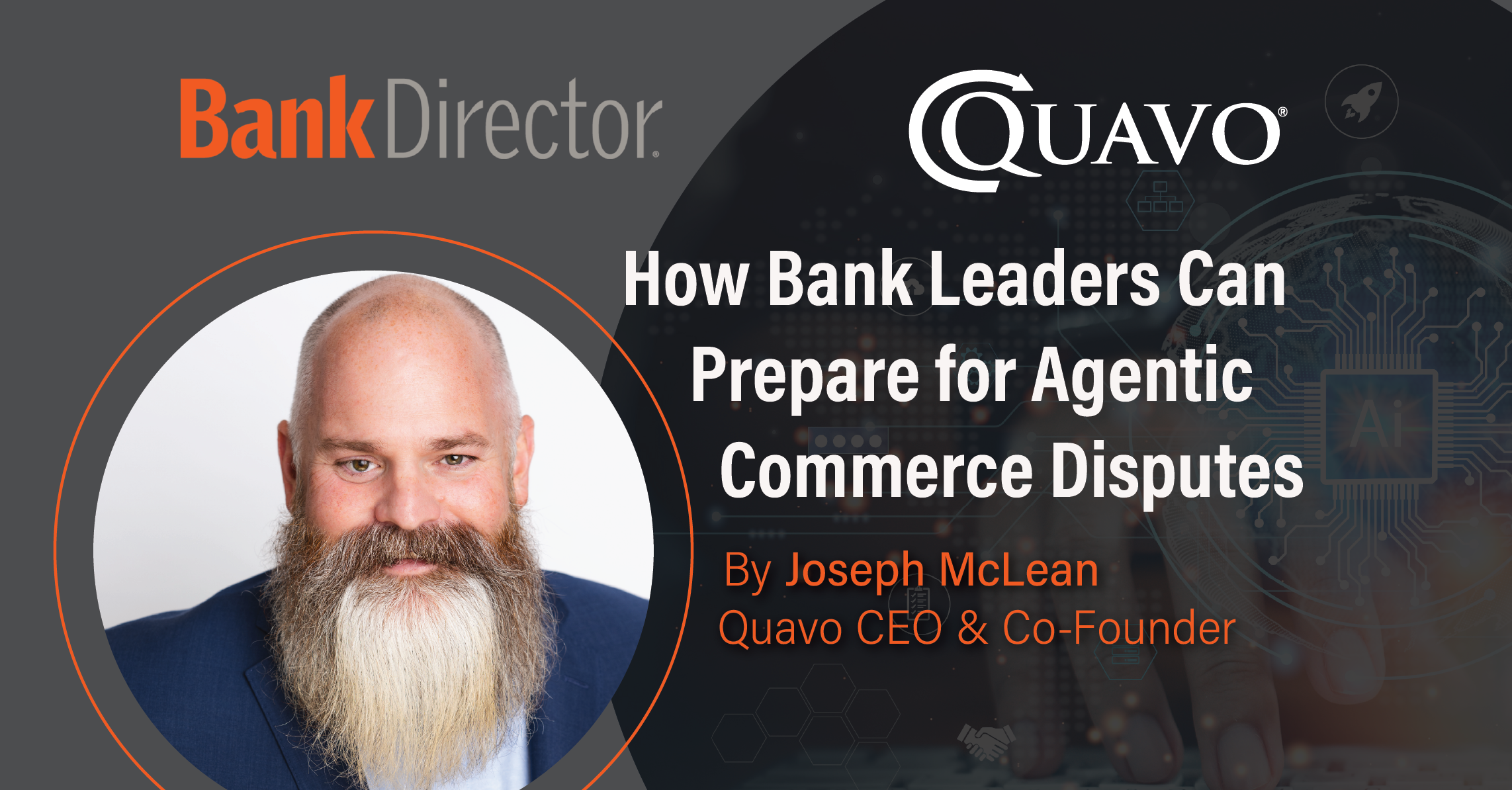
Originally published on BankDirector.com
Agentic commerce promises efficiency gains, but bank leaders must brace for an unprecedented wave of fraud disputes that could test every institution’s fraud dispute resolution capability.
Many bank boardrooms are buzzing with excitement about agentic commerce — artificial intelligence (AI) agents that shop and purchase for consumers autonomously. With projections showing a $136 billion market in 2025 growing to $210 billion by 2026, the potential for operational efficiency and customer satisfaction appears tremendous.
But what keeps me, and so many banking leaders, awake at night about agentic commerce is the overlooked fraud implications.
While the industry focuses on growth opportunities, a brewing storm of fraud disputes threatens to overwhelm institutions unprepared for this technological shift. AI agents have the potential to make mistakes, fraudsters will exploit new attack vectors and consumers will dispute purchases they never directly authorized.
The Perfect Storm: Why Agentic Commerce Will Trigger Dispute Chaos
First-party fraud claims represent the most significant challenge banks will face. When customers claim, “I didn’t order this; my AI agent did,” liability becomes fundamentally more complex.
Several factors will drive this surge in disputes:
- AI errors that plague even the most sophisticated systems. Agents will misinterpret consumer intent or fall victim to “hallucinations” — when generative AI produces false or misleading information — that select wrong products, creating dissatisfaction and return disputes.
- New fraud vectors that are already emerging. Cybercriminals are already creating fake websites designed to impersonate legitimate services, tricking AI agents into unauthorized transactions. Distinguishing between AI initiated and human authorized actions will become increasingly difficult, increasing chargeback vulnerability.
- Regulatory uncertainty compounding the problem. The European Union has classified agentic finance tools as “high risk” starting in 2026, signaling that regulatory scrutiny will intensify globally.
- Consumer trust gaps creating additional friction. With just 39% of U.S. consumers having used AI for shopping, trust barriers remain high, and consumers may dispute AI-driven transactions, especially for high-value purchases they feel weren’t properly authorized.
Strategic Preparation: What Bank Leadership Must Address Now
These disputes won’t simply be “more of the same.” They will arrive in higher volumes with unprecedented complexity, particularly regarding liability determinations.
The most critical decision facing bank boards involves dispute strategy. Traditional approaches that stitch together multiple vendors and manual processes for different stages of the dispute lifecycle create silos, delays and mistakes — problems that will intensify when dispute volumes spike.
Organizations need dispute systems that cover the full lifecycle efficiently. The strategy must serve internal teams effectively while building customer trust through fast, fair and transparent processes.
The AI Intelligence Imperative
Just as consumers will rely on AI agents, banks must integrate AI into their dispute resolution capabilities. AI should automate manual tasks that historically slowed teams down, streamlining workflows and creating better customer experiences.
Effective AI-driven dispute systems can resolve clear first-party fraud claims in seconds while giving investigators more time for complex cases where liability remains uncertain. Systems leveraging decades of dispute data and user feedback can reduce average resolution times from 30 to 11 days.
Historical data and real-world case experience matter. Dispute systems need robust training data to learn effectively and maintain compliance with existing Regulation E and Regulation Z requirements, plus emerging AI transaction regulations.
Turning Disputes Into Competitive Advantage
Forward-thinking institutions recognize that disputes aren’t merely operational processes — they’re critical customer experience touchpoints.
The economics are stark: Sixty-six percent of customers would leave their bank after a frustrating dispute experience, representing significant risk when customer acquisition costs exceed $780 per customer. Conversely, 73% of customers say positive dispute handling influences their loyalty.
Real-time communication and clear updates throughout the resolution process will differentiate institutions that thrive from those that struggle under the pressure of increased dispute volumes.
Banks that modernize dispute resolution capabilities now — implementing comprehensive, AI-driven platforms designed for the full dispute lifecycle — will transform disputes from operational liabilities into competitive advantages. The agentic commerce market will explode in 2026 and so will disputes. Institutions preparing today can stay ahead of this shift, while those caught unprepared risk being overwhelmed by unprecedented fraud management complexity.
Based on how fraud trends are evolving, it is clear that agentic commerce disputes are coming. The real question is whether bank boards are setting their institutions up to capitalize on this shift rather than just react to it.
